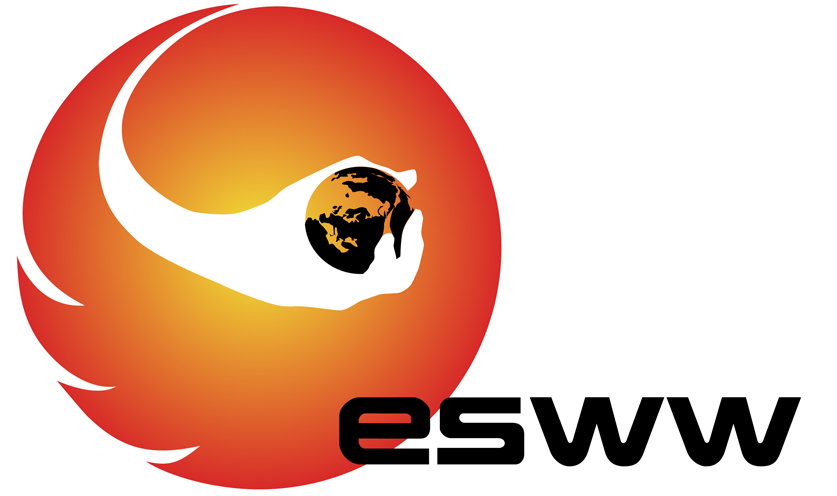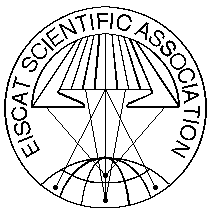
November 28 - December 02, 2011 - Namur, Belgium
Innovations in Space Weather Services and Applications
| Session: | Session 5: Innovations in Space Weather Services and Applications (07) |
| Type: | |
| Date: | Friday, December 02, 2011 |
| Time: | 09:00 - 12:30 |
| Chair: | Matthew Angling & Eva Robbrecht |
| Co-chair: | |
| Remarks: |
Splinter Wrap-up: 10:15-10:30 Coffee Break & Poster Session: 10:30-11:15 |
| Seq | Time | Title | Abs No | ||||
| 1 | 09:00 |
Real-Time Forecast of the Solar Spectral Irradiance based on SDO/HMI Solar Disk Magnetograms and Intensity Images
Antunes Vieira, Luis Eduardo1; Dudok de Wit, Thierry1; Kretzschmar, Matthieu2 1CNRS and University of Orleans, FRANCE; 2Observatoire Royal de Belgique, BELGIUM The conditions of the upper atmosphere can change rapidly in response to the solar and geomagnetic activity. In particular, the evolution of the thermosphere in response to space weather conditions is necessary to evaluate precisely the air drag, which is a key parameter for survey and precise tracking of space objects in Low Earth Orbit. Among several heliophysical and geophysical quantities, the accurate evolution of the solar irradiance is fundamental to forecast the evolution of the neutral and ionized components of the upper atmosphere. We have recently developed an artificial neural network model to reconstruct in near real-time the evolution of the solar irradiance based on SDO/HMI solar disk magnetograms and intensity images. The model is based on the assumption that great part of the solar irradiance variability is due to the evolution of the structure of the solar magnetic field. Here we describe the extension of the model needed to provide a short-term forecast of the solar irradiance. We employ a surface flux transport model to infer the evolution of the magnetic bipolar structures, which is then employed to compute the solar irradiance. An online prototype of the near real-time spectral reconstruction is available at http://lpc2e.cnrs-orleans.fr/~soteria/. This study received funding from the European Community's Seventh Framework Programme (FP7/2007-2013, FP7-SPACE-2010-1) under the grant agreement nrs. 218816 (SOTERIA project, www.soteria-space.eu) and 261948 (ATMOP,www.atmop.eu). We also gratefully thank the instrument teams for making their data available. |
|||||
| 2 | 09:15 |
Ensemble Forecasting of Coronal Mass Ejection Propagation in the Interplanetary Medium
Pulkkinen, Antti1; Taktakishvili, Aleksandre2; Odstrcil, Dusan3; MacNeice, Peter4 1The Catholic University of America and NASA/GSFC, UNITED STATES; 2UMBC and NASA/GSFC, UNITED STATES; 3GMU and NASA/GSFC, UNITED STATES; 4NASA/GSFC, UNITED STATES Ensemble forecasting attempts to generate a statistical representation of possible future states of the system by accounting for 1) uncertainties in the initial state of the system and 2) inaccuracies in the modeling process. Characterization of the uncertainties associated with forecasts is a feature highly desired by the end-users of space weather services. In this paper we study the effects of 1), i.e. uncertainties in the initial transient state on forecasting of the coronal mass ejection (CME) propagation in the interplanetary medium. More specifically, initial states of the transients are determined using LASCO C3 imagery and the automatic cone parameter detection method. Unlike the manual cone model analysis technique, the automatic method is able to generate distribution of cone parameters characterizing the uncertainty in the initial state of the transient. WSA/ENLIL model is used to propagate a large set of transients sampled from the cone parameters distribution and introduced in the inner heliospheric boundary of the model. WSA/ENLIL then propagates the set of transients through the interplanetary medium. Initial results of the ensemble approach are presented for the April 3, 2010 and November 18, 2003 CME events. Cone parameter distributions are sampled for 100 initial transient states and corresponding number of WSA/ENLIL simulations are carried out for both events. WSA/ENLIL predictions of the CME arrival at the Earth's orbit and Kp index estimates via empirical relation are recorded for each member of the set and corresponding probability distributions are generated. It is shown that the generated probability distributions provide significant new information in terms of range and structure of the distributions about the uncertainties in the transient initiation process. Usage of the ensemble approach in different operational settings is discussed. |
|||||
| 3 | 09:30 |
>From Research to Operations: Geometric and Polarimetric Localization
de Koning, Curt A.1; Pizzo, V. J.2; Millward, G.2 1NOAA, UNITED STATES; 2NOAA/SWPC, UNITED STATES By the start of October 2011, forecasters in the NOAA Space Weather Prediction Center will have access to several new tools, including geometric and polarimetric localization. The geometric localization technique [Pizzo and Biesecker, 2004] utilizes a series of lines-of-sight from two space-based coronagraphs to determine gross propagation characteristics of coronal mass ejections (CMEs) in three-dimensional space. The polarimetric localization technique [Moran and Davila, 2004] uses the percent polarization observed by a single coronagraph to obtain a three-dimensional reconstruction of a CME. We present a comparison of the techniques for some recent events. We find that the two techniques yield comparable CME velocities; furthermore, both are straightforward to apply and they can be used in near-real-time. In conclusion, we believe that these techniques promise a substantial improvement in our capability to locate and characterize CMEs for forecasting. |
Invited | ||||
| 4 | 09:50 |
Geomagnetic Storm Forecasting Service
Podladchikova, Tatyana1; Petrukovich, Anatoli2 1 Institute for Applied System Analysis, NTUU “KPI”,Space Research Institute RAS, UKRAINE; 2Space Research Institute RAS, RUSSIAN FEDERATION
In this work we present a service implemented at Space Research Institute RAS, Russia, providing advance warning about the future geomagnetic storm magnitude (the negative peak Dst) using first geomagnetic storm indications. We demonstrate a clear relation between the solar wind parameters in the beginning of the storm development with the ultimate storm strength. For suddenly developing major storms that have essential influence on susceptible technological systems such as satellites, pipelines, power systems and radio communications we predict lower and upper limits of the negative peak Dst. The high predictive potential of the proposed technique was confirmed by testing it on geomagnetic storms during the period 1995-2010. The advance warning time about the future geomagnetic storm strength on average achieves 5-6 hours and varies from 1 to 22 hours. The error of the peak Dst prediction does not exceed 25% with probability of 0.96. The false prediction probability does not exceed 0.03. |
|||||
|
10:05 Poster Review |
|||||||
| 5 | 11:15 |
Solar activity Impact on ECAC GNSS Aviation Operation
Robert, Emilien EUROCONTROL, BELGIUM
Aviation operations, including navigation, surveillance and timing, rely more and more on GNSS services. Concerning navigation, ICAO has decided on the objective to move from ground radio navigation aids based operations to GNSS based operations for all phases of flight. GNSS is already widely used for the cruise part of the flight and is being further developed for the approach and landing operations. The surveillance domain follows the same trend. GNSS based services already enhance radar systems and an increasing part of the surveillance domain will rely on GNSS services in the coming years. A less familiar but still very important application is the use of GNSS as a time reference. GNSS is already used for some radar and multilateration synchronization and an increasing number of networks will rely on GNSS time. GNSS performances under nominal ionosphere condition are already well known. However, before moving further on these GNSS services, the aviation community has to better assess GNSS performances under abnormal ionosphere conditions. |
Invited | ||||
| 6 | 11:35 |
The Real-Time Ionosphere Monitoring at the Norwegian Mapping Authority
Jacobsen, Knut Stanley; Schäfer, Sebastian Norwegian Mapping Authority, NORWAY
At high latitudes, the ionosphere frequently experiences auroral-related disturbances, impacting GNSS-based services. The Norwegian Mapping Authority (NMA) has developed a real-time ionosphere monitoring application based on a network of more than 100 GNSS ground receivers, which is distributed over the norwegian mainland and islands, covering the region from 20°W to 30°E and 55°N to 80°N. The application provides ionospheric VTEC, GIVE and ROTI maps at a 1x1 degree resolution and scintillation maps (S4 and óo) at a 5x5 degree resolution, both as graphics and data files, and ionospheric gradient information. The time resolution of the results is 1 minute. |
Invited | ||||
| 7 | 11:55 |
ViSpaNeT - A Network of distributed Data and Models for the Provision of Space Weather Services
Beltrami, Pablo1; Hake, Philipp1; Gangloff, Michel2; Lazaro, Didier3; Heynderickx, Daniel4; Wintoft, Peter5; Hilgers, Alain6; Jiggens, Piers6 1etamax space GmbH, GERMANY; 2Université Paul Sabatier, FRANCE; 3ONERA, FRANCE; 4DH Consultancy, BELGIUM; 5IRF, SWEDEN; 6ESA-ESTEC, NETHERLANDS The Virtual Space weather Applications Network of Tools ViSpaNeT is a system developed with the objective of providing remote access to distributed space weather data and models. The system uses the approach followed by Virtual Observatories (VO) providing a framework for access to distributed data archives and models by facilitating the standardisation of exchange formats and interfaces. In ViSpaNeT, data sources and models are treated as remote nodes and are maintained by their respective providers. Web services are used for communication between the nodes and standardised SPASE descriptors and VO Tables are used for information exchange. Users like S/C designers or operators will be able to access the ViSpaNeT central node (a web portal), which in turn uses a common interface to call upon specialised nodes such as SWENET, SAAPS, IPSAT and other nodes set up by consortium members for Vispanet. . The central node will for example allow the use of data from one node to be used as input for a second node, setting automated runs and alerts based on specific thresholds. The targeted users of the tool are: Through the central node, users can choose among various services from four different types: analysis, nowcast, forecast/predict, and real time monitoring. Each service involves a different use case derived from specific user requirements. This prototype system is currently in the last phase of its development, involving a public test phase and an evaluation of both the approach and the implemented services. This presentation will demonstrate the ViSpaNeT system providing an overview of the functions and capabilities of the tool.
|
|||||
| 8 | 12:10 |
The Next Generation Space Environment Information System (SPENVIS)
Kruglanski , Michel1; Evans, Hugh2; Rodgers, David2; Daly, Eamonn2 1BIRA, BELGIUM; 2ESA/TEC-EES, NETHERLANDS The Space Environment Information System (SPENVIS) had been under continual development since 1996 for ESA by BIRA, providing the world community with an on-line resource for evaluating the space environment. SPENVIS-4 (www.spenvis.oma.be) is a World Wide Web based interface to a comprehensive set of models of the space environment. It has been operational for more than ten years now and has a mature international user community of about 2000 registered users who use the system for various purposes, e.g. mission analysis and planning, educational support, and running models for scientific applications. Within the ESA/GSTP-5 programme, funding has been provided for the development of a next generation of this resource. The informatics technology available today has evolved considerably from what was state of the art in 1995, where web servers were limited to basic html pages and cgi-scripts. Within the scope of this development the framework and models of the SPENVIS system will be reviewed, restructured and re-engineered using current web design techniques and programming methodologies, providing a new, extensible and open framework for the integration of current and future space environment models. Distributed architectures for space data analysis and collaborative engineering have been investigated through several ESA activities (SAAPS, SEDAT, VISPANET, SEPEM, REST-SIM) from which potential requirements and solutions for the SPENVIS-5 project may emerge. The advantages of a distributed approach are that the resources are acquired, developed and maintained at an "expert centre" where the competences and necessary supporting facilities reside and are available as needed by a "coordination node" in response to end-user needs and in compliance with any access restrictions that may apply. The new system is foreseen to be operated in the context of ESA's SSA programme. |
Invited | ||||











